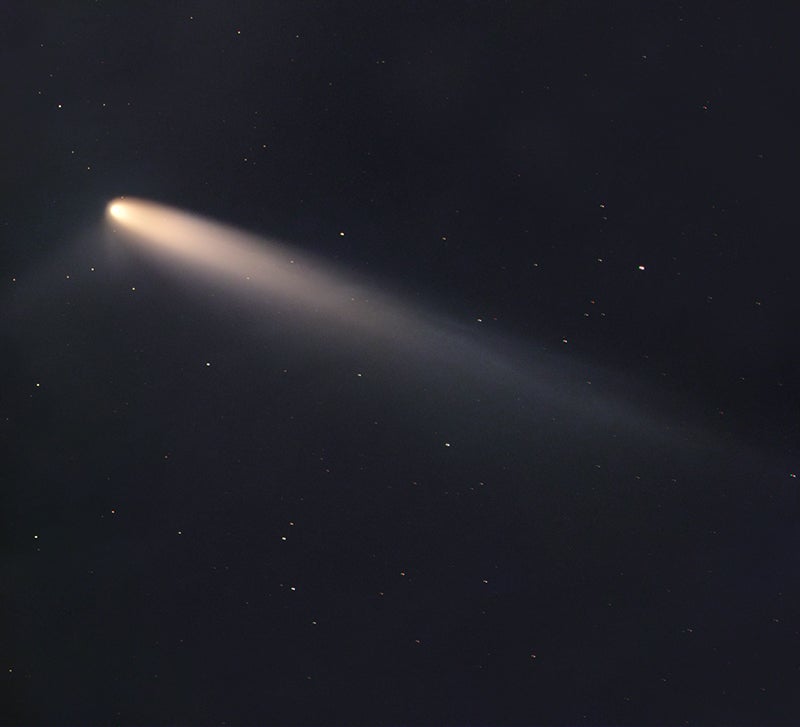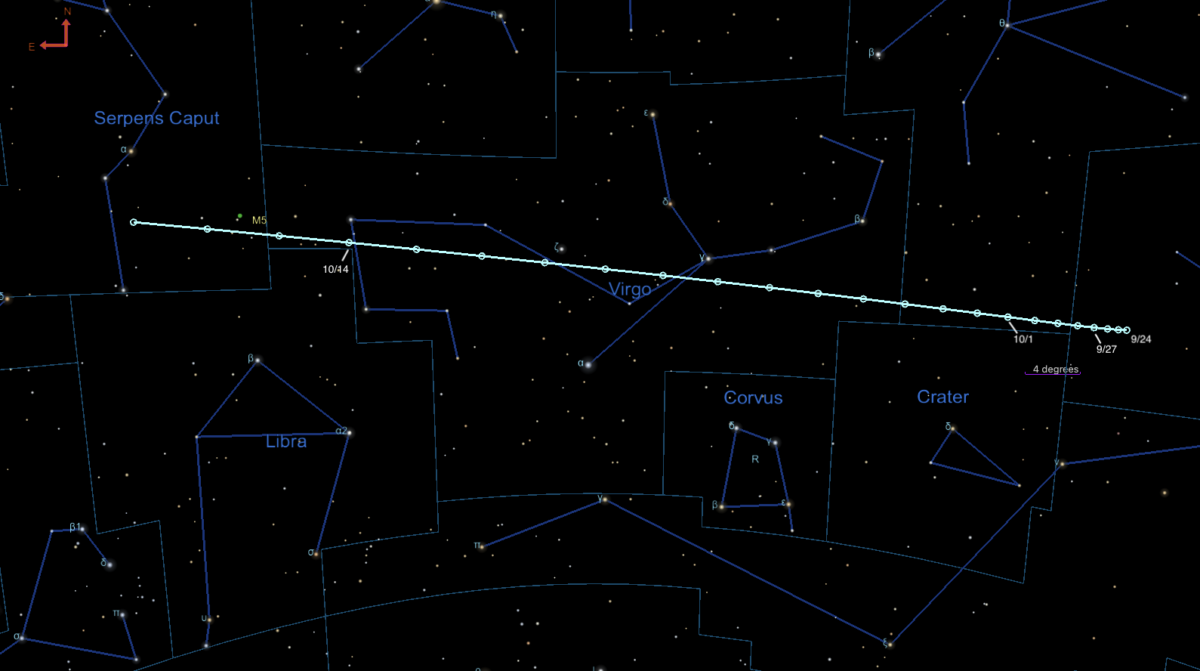
Comet C/2023 A3, also known as Comet Tsuchinshan-ATLAS, may become the next brilliant comet. The brightnesses of such objects, however, are notoriously difficult to predict. But if it continues brightening the way it has during the past month, we should get a nice show.
The comet’s name comes from the two observatories that discovered it: the Purple Mountain Observatory of the Chinese Academy of Sciences (also known as the Zijinshan Astronomical Observatory) and the Asteroid Terrestrial-impact Last Alert System (ATLAS), a group of four telescopes (two in Hawaii, one in Chile, and one in South Africa) that scan the sky each night looking for moving objects.
Tsuchinshan Observatory spotted it first, on January 9, 2023, and then the South African ATLAS telescope picked it up on February 22. At its discovery, the comet was in the constellation Serpens, not quite 4° south of the globular cluster M5.
Where and how to view the comet
Currently, Tsuchinshan-ATLAS lies in the constellation Sextans and is rising an hour before the Sun for Northern Hemisphere observers. It will reach perihelion (its closest approach to the Sun) on September 27, when it will lie 36.4 million miles (58.6 million kilometers) from our daytime star. It will come closest to Earth on Oct. 12. On that date, it will lie 43.9 million miles (70.7 million km) from our planet.
As of this writing, the comet has a tail 1° long and is glowing at magnitude 3.4, which normally would put it into range of human eyes. But scattered light from the Moon and the onset of morning twilight make such an observation difficult. To look for it, get out before sunrise, look east, and use binoculars or a telescope at low power.

A more productive option will be to wait until Tsuchinshan-ATLAS makes its closest approach to Earth next month. On that date, the comet will once again lie near its discovery position, although this time within the boundaries of the constellation Virgo. To find it, aim your binoculars or telescope (perhaps just your eyes?) a bit more than 4° southwest of M5. The comet will then move through Serpens quickly, and enter the constellation Ophiuchus on the 19th. Then, on October 28, it will lie just south of Ophiuchus’ second-brightest star, magnitude 2.8 Cebalrai.
The star will be easy to find. Let’s hope the comet will be, too. Good luck!
Make sure to watch for our October Sky This Month column next week, as well as keep an eye on upcoming Sky This Week columns for updates and more details on how to observe the comet.









